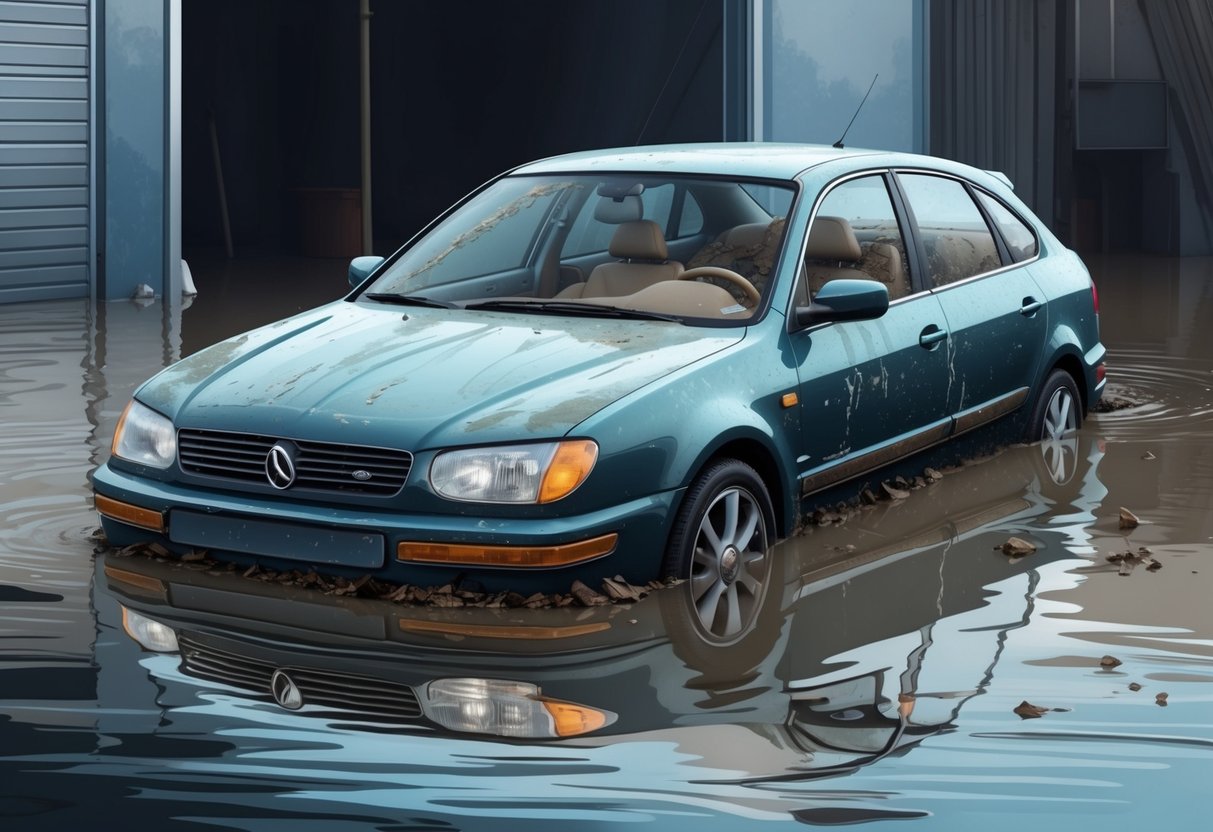
Electrical System and Mechanical Warning Signs
Flood-damaged cars often develop hidden electrical and mechanical problems that can cause long-term reliability concerns. Buyers should carefully inspect key systems, as signs of past water exposure may reveal the risk of expensive repairs ahead.
Spotting Electrical Problems
Electrical system issues are some of the most common red flags in flood-damaged vehicles. Start by checking all electronic features, including power windows, locks, headlights, interior lights, dashboard displays, and audio equipment.
Test each function multiple times to catch intermittent faults. Carefully examine wiring under the dashboard and inside the engine compartment.
If the wires feel unusually brittle or stiff, this could indicate past water damage and aging of the insulation, as described by HowStuffWorks. Look for corrosion on connectors, fuse boxes, and circuit boards.
Sometimes faint rust on unpainted or exposed metal components—such as screw heads—can point to previous flooding, as explained by Consumer Reports.
Be alert for electrical problems like malfunctioning seat adjustments or windows, flickering lights, musty smells from vents, or persistent warning lights on the dashboard. Any unexplained issue with the vehicle’s electronics increases the chance it has suffered flood exposure.
Examining Mechanical Components
Mechanical parts can also exhibit warning signs when exposed to water. Open the hood and inspect the engine compartment for dirt or silt in nooks and crannies—debris in hard-to-clean areas often signals flood damage.
Check for rust or corrosion on mechanical linkages, battery terminals, and under-hood bolts. Water intrusion may leave moisture stains or a white powdery residue on metal surfaces, both under the hood and under the car.
Examine brake and fuel lines for corrosion or pitting, as failure here can be dangerous. Listen for unusual noises from the engine, transmission, or wheel bearings, which could be a result of moisture intrusion in key systems.
If it’s possible, inspect fluids for a milky or discolored appearance—a sign of water mixing with oil, transmission fluid, or brake fluid. Any such evidence should prompt a thorough mechanical inspection before proceeding with the purchase.
Professional Inspections and Test Drives
A thorough check by a qualified automotive technician and an attentive test drive are both essential in identifying hidden flood damage that may not be obvious at first glance. These steps can reveal electrical, mechanical, and sensory clues that strongly suggest a car has been exposed to water.
Involving an Automotive Technician
Hiring an experienced automotive technician is the most reliable way to assess a vehicle for flood damage. Technicians have the skills and equipment needed to inspect for subtle signs such as waterlines, corroded electrical components, and moisture hidden under carpeting or dashboards.
A professional can also review the vehicle’s history report, paying close attention to any titles branded as flood or salvage. They may use diagnostic tools to check electronic systems for faults, as water infiltration can lead to recurring electrical problems later on.
Key areas checked by technicians during inspections include:
- Under-seat wiring and electronic modules
- Engine and transmission systems for water contamination
- HVAC ducts and air filter compartments for mud or silt
Regular buyers often overlook these areas, making a professional inspection a valuable step in the buying process.
What to Notice During a Test Drive
Flood-damaged cars may display specific issues during a test drive. Drivers should pay close attention to how the brakes, steering, and transmission respond.
Any unusual noises, strange electrical behavior, or warning lights can indicate hidden water exposure. A musty or mildew smell when the vehicle is closed up—even if masked by air freshener—can signal possible mold from past flooding.
Windows that fog excessively or HVAC systems that emit damp odors might also be warning signs. During the drive, test all electronics, including headlights, infotainment systems, power windows, and locks.
Malfunctions or glitches in these systems are common in flood-damaged vehicles, as pointed out in guides to spotting flood-damaged cars before you buy. Take note of sludge or debris in hard-to-reach areas like glove compartments and trunk corners—these are often missed during cosmetic cleaning but reveal a history of flooding.